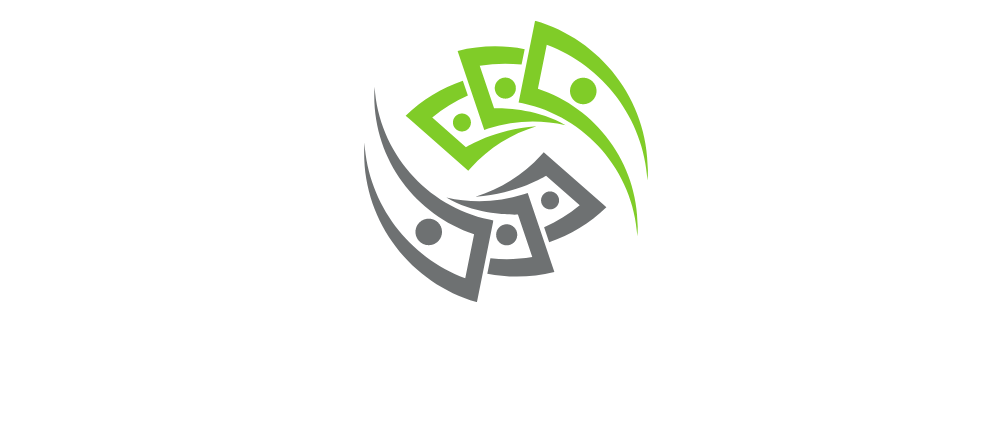Tokenomics Decoded: Your Guide to Crypto Presale Success

Key Takeaways
- Tokenomics is the Critical Foundation: Understanding token economics is essential for making informed decisions in crypto presales, providing insights into token creation, distribution, and long-term value potential.
- Presale Strategies Matter: Crypto presales offer unique investment opportunities with controlled token distribution, discounted pricing, and early access, but require careful evaluation of supply mechanisms and project fundamentals.
- Risk Assessment is Crucial: Investors must conduct comprehensive due diligence, analyzing token utility, governance structures, team credentials, and potential red flags before participating in any crypto presale.
- Technical Infrastructure Drives Value: Smart contract mechanics, transparent vesting schedules, and robust economic modeling are key indicators of a project’s potential success and investment reliability.
- Regulatory Compliance is Non-Negotiable: Successful crypto presale investments require understanding complex legal frameworks, including KYC/AML requirements and jurisdictional restrictions that impact token investments.
- Strategic Evaluation Minimizes Risks: By systematically examining tokenomics, technical aspects, and market positioning, investors can develop a more informed approach to crypto presale investments.
Navigating the world of cryptocurrency can be complex especially when it comes to understanding tokenomics in presales. If you’re looking to invest or participate in emerging blockchain projects you’ll want to grasp the fundamental principles that drive token economics.
Tokenomics represents the critical economic framework behind cryptocurrency projects defining how tokens are created distributed and managed. In presales these mechanisms become even more crucial as they determine the initial value allocation potential growth and long-term sustainability of a digital asset. By diving into the intricacies of tokenomics you’ll gain valuable insights that can help you make more informed investment decisions.
Whether you’re a seasoned crypto enthusiast or a newcomer to the blockchain space understanding tokenomics can provide you with a strategic advantage. This article will break down the key components and help you evaluate crypto presales with greater confidence and expertise.
What Are Crypto Presales?
Crypto presales represent an early-stage fundraising mechanism where blockchain projects offer tokens to select investors before their public launch. These initial token distributions enable projects to secure capital and build initial market momentum while providing investors with potential early-entry advantages.
Key Characteristics of Presale Offerings
Crypto presales possess distinctive features that differentiate them from traditional investment mechanisms:
- Limited Participation: Restricted to accredited investors or project-selected participants
- Discounted Pricing: Tokens offered at lower rates compared to eventual public sale prices
- Allocation Constraints: Predefined token quantity available for purchase
- Early Access Incentives: Opportunities for investors to acquire tokens before broader market availability
How Presales Differ From Initial Coin Offerings
Presales and Initial Coin Offerings (ICOs) share similarities but exhibit critical distinctions:
- Investment Stage: Presales occur before ICOs with more exclusive investor access
- Token Pricing: Presale tokens typically feature lower prices and higher potential appreciation
- Regulatory Compliance: Presales often implement stricter investor verification processes
- Investment Volume: Smaller investment pools with more controlled token distribution
- Risk Profile: Generally lower risk compared to broader ICO market launches
The strategic differences enable projects to validate market interest and secure foundational financial support through controlled token distribution mechanisms.
The Fundamentals of Tokenomics

Tokenomics forms the economic backbone of cryptocurrency projects, providing a comprehensive framework for understanding how digital assets create and maintain value. This section explores the critical components that determine a token’s economic viability and potential for long-term success.
Token Supply and Distribution
Token supply represents the total number of tokens that exist within a cryptocurrency ecosystem. Projects implement strategic distribution models to control token circulation and maintain economic stability. Key distribution approaches include:
- Initial Allocation: Percentage breakdown of tokens across different stakeholder groups
- Founders: 10-15% of total supply
- Investors: 20-30% reserved for presale participants
- Community: 25-35% allocated for ecosystem development
- Reserve: 10-20% held for future strategic initiatives
- Vesting Schedules: Controlled token release mechanisms that prevent market flooding
- Linear vesting: Gradual token unlocking over predetermined periods
- Cliff vesting: Initial lockup period followed by periodic releases
- Milestone-based vesting: Token unlocking contingent on project achievements
- Deflationary Mechanisms: Token reduction strategies to potentially increase value
- Burn mechanisms that permanently remove tokens from circulation
- Transaction fee redistribution
- Automatic liquidity generation
Token Utility and Functionality
Token utility defines the practical applications and value propositions within a blockchain ecosystem. Effective tokenomics requires clear and compelling use cases that drive demand and ecosystem engagement:
- Governance Rights: Tokens enabling voting and decision-making processes
- Proposal submissions
- Protocol upgrades
- Resource allocation
- Transactional Utility: Direct functional applications within platform ecosystems
- Payment mechanisms
- Access to specific services
- Staking and yield generation opportunities
- Incentive Structures: Economic designs encouraging specific user behaviors
- Staking rewards
- Liquidity provider compensation
- Network participation incentives
The strategic design of token supply and utility determines a project’s long-term sustainability and investor attractiveness. Comprehensive tokenomics require balanced approaches that align economic incentives with technological innovation.
Economic Models in Crypto Presales
Economic models in crypto presales represent complex frameworks that govern token distribution and value generation. These models determine how blockchain projects structure their initial token offerings to attract investors and ensure long-term ecosystem sustainability.
Pricing Mechanisms
Crypto presales employ sophisticated pricing strategies to balance investor attraction and project valuation. Dynamic pricing models typically include:
- Tiered Pricing: Investors receive different token prices based on investment volume
- Bonuses: Early participants gain percentage-based token discounts
- Sliding Scale Mechanisms: Token prices incrementally adjust during presale stages
- Dutch Auction Techniques: Price decreases progressively to find market equilibrium
Pricing mechanisms aim to create fair token distribution while preventing market manipulation and ensuring project capitalization.
Vesting Schedules
Vesting schedules protect project integrity by controlling token release patterns. Key characteristics include:
- Linear Vesting: Tokens unlock uniformly over predetermined periods
- Cliff Vesting: Initial lockup period followed by gradual token release
- Milestone-Based Vesting: Token unlocks contingent on project development achievements
- Graduated Vesting: Increasing token percentages released at specific intervals
Strategic vesting prevents market flooding and demonstrates long-term project commitment.
Token Allocation Strategies
Effective token allocation balances stakeholder interests across multiple ecosystem participants:
- Founders: 10-20% token allocation with extended vesting periods
- Investors: Carefully structured presale allocations
- Development Team: Performance-linked token distributions
- Community Reserves: Tokens dedicated to ecosystem growth
- Liquidity Pools: Predetermined percentage for market stability
Transparent allocation strategies build investor confidence and support sustainable blockchain ecosystem development.
Risk Assessment in Presales
Investing in crypto presales demands comprehensive risk evaluation to protect your financial interests and minimize potential losses. Understanding the critical factors that influence token value and project legitimacy becomes essential for making informed investment decisions.
Evaluating Token Value Potential
Token value potential emerges from multiple interconnected factors that investors must systematically analyze. Key assessment metrics include:
- Market Demand Analysis
- Examine project’s unique value proposition
- Assess potential user adoption rates
- Evaluate competitive landscape positioning
- Economic Sustainability Indicators
- Review token distribution percentages
- Analyze total and circulating supply metrics
- Calculate potential dilution risks
- Technical Fundamentals
- Validate blockchain infrastructure
- Assess smart contract security audits
- Verify development team’s technical expertise
Identifying Red Flags in Tokenomics
Investors must recognize warning signs that signal potential investment risks:
- Questionable Token Economics
- Excessive token allocation to founding team
- Lack of transparent vesting schedules
- Unrealistic token supply mechanisms
- Governance Inconsistencies
- Centralized token control
- Limited community participation rights
- Opaque decision-making processes
- Structural Investment Risks
- Insufficient liquidity provisions
- Minimal long-term ecosystem development plans
- Absence of clear utility mechanisms
- Credibility Indicators
- Unverified team credentials
- Missing comprehensive whitepaper
- Limited community engagement
- No established roadmap with measurable milestones
- Regulatory Compliance
- Lack of legal framework documentation
- Unclear jurisdictional operations
- Minimal investor protection mechanisms
By systematically evaluating these dimensions, you can develop a robust risk assessment framework for crypto presale investments.
Technical Aspects of Tokenomics
Technical aspects define the intricate mechanisms driving token value and distribution in crypto presales. This section explores the complex infrastructure enabling transparent and secure token ecosystem development.
Smart Contract Mechanics
Smart contracts serve as programmable protocols establishing automated token generation and distribution rules. These blockchain-based agreements execute predefined conditions without intermediary intervention:
- Automated Execution: Encode precise token allocation parameters
- Transparency: Provide immutable transaction records
- Security: Prevent unauthorized token modifications
- Validation: Enforce strict participation requirements
Smart contract architectures typically integrate multiple verification layers:
- Token creation parameters
- Distribution percentage constraints
- Investor eligibility criteria
- Vesting schedule enforcement
Technical implementations leverage Solidity programming language, enabling complex computational logic within Ethereum-compatible blockchain environments. Contract audits from recognized security firms validate mechanism integrity.
Token Economics Modeling
Token economics modeling involves sophisticated mathematical frameworks quantifying potential token performance:
- Supply Dynamics: Calculate total and circulating token volumes
- Price Prediction Models: Develop algorithmic valuation mechanisms
- Market Interaction Simulations: Project potential investor behaviors
Key modeling components include:
- Token supply curve analysis
- Demand elasticity calculations
- Economic incentive structures
- Potential value appreciation scenarios
Advanced modeling techniques incorporate machine learning algorithms to predict potential token trajectory based on historical blockchain economic patterns. Quantitative analysis helps investors assess potential investment risks and opportunities with greater precision.
Comprehensive token economics modeling requires interdisciplinary expertise combining cryptographic technologies, financial mathematics, and blockchain network dynamics.
Investment Considerations
Investing in crypto presales requires strategic evaluation and comprehensive risk assessment. Your investment approach must encompass thorough due diligence and systematic value projection methodologies.
Due Diligence Strategies
Effective due diligence involves multiple layers of investigation beyond surface-level project information. Your research strategy should incorporate:
- Whitepaper Analysis
- Examine comprehensive token economics framework
- Validate technical architecture details
- Assess team credentials and blockchain experience
- Project Credibility Verification
- Investigate founder background
- Review team’s professional network
- Check previous project achievements
- Analyze social media presence and community engagement
- Technical Documentation Review
- Audit smart contract mechanisms
- Evaluate blockchain infrastructure
- Confirm security protocol implementations
- Verify third-party code audits
Long-Term Value Projection
Value projection requires multidimensional analytical frameworks:
- Economic Modeling
- Calculate potential token appreciation trajectory
- Analyze market capitalization potential
- Estimate token supply and demand dynamics
- Performance Metrics
- Track historical price performance
- Compare against similar blockchain projects
- Evaluate technological innovation potential
- Market Positioning Assessment
- Identify unique value proposition
- Analyze competitive landscape
- Determine scalability potential
Your strategic approach combines rigorous research with quantitative analysis to minimize investment risks and maximize potential returns in crypto presales.
Regulatory Landscape
The regulatory environment for crypto presales continues to evolve rapidly across global jurisdictions. Investors must navigate complex legal frameworks that significantly impact token investment strategies and potential returns.
Compliance Requirements
Crypto presales face stringent regulatory scrutiny from multiple governmental agencies. Key compliance requirements include:
- Securities registration with financial regulators
- Know Your Customer (KYC) verification protocols
- Anti-Money Laundering (AML) documentation submissions
- Transparent financial reporting mechanisms
- Investor accreditation validation
Crypto projects must implement robust compliance frameworks to ensure legal legitimacy. Regulatory bodies like the SEC in the United States and ESMA in Europe mandate strict documentation and investor protection guidelines.
Legal Considerations for Token Investors
Token investors encounter multiple legal dimensions when participating in crypto presales:
- Jurisdictional restrictions on token investments
- Tax implications of cryptocurrency transactions
- Legal classification of tokens as securities or utility instruments
- Potential liability for cross-border investment activities
- Investor protection mechanisms against fraud
Successful presale participation requires comprehensive understanding of local and international regulations. Investors should consult legal professionals specializing in blockchain and cryptocurrency regulatory frameworks to mitigate potential legal risks.
Regulatory compliance represents a critical factor in determining the legitimacy and long-term viability of crypto presale investments. Thorough due diligence and proactive legal assessment can protect investors from potential regulatory challenges and financial uncertainties.
Conclusion
Navigating the complex world of crypto presales requires more than just surface-level understanding. You’ll need to dive deep into tokenomics analyzing token supply distribution utility and economic models to make informed investment decisions.
By applying the strategic insights and comprehensive evaluation techniques discussed in this article you can approach crypto presales with greater confidence and precision. Your success hinges on thorough research rigorous risk assessment and a nuanced understanding of blockchain economics.
Remember that the crypto landscape is constantly evolving. Stay curious continue learning and maintain a disciplined approach to evaluating potential investments. Your strategic mindset will be your most valuable asset in the dynamic world of cryptocurrency presales.
Frequently Asked Questions
What is tokenomics?
Tokenomics is the economic framework that governs the creation, distribution, and management of cryptocurrency tokens. It encompasses key aspects like token supply, distribution mechanisms, utility, pricing strategies, and long-term value generation. Understanding tokenomics helps investors assess a project’s potential, sustainability, and economic viability in the blockchain ecosystem.
How do crypto presales differ from Initial Coin Offerings (ICOs)?
Crypto presales are early-stage fundraising events with limited participation, offering tokens at discounted prices to select investors before public launch. Unlike ICOs, presales have stricter allocation constraints, more controlled token distribution, and higher regulatory compliance. They allow projects to validate market interest and secure foundational financial support through a more strategic and selective investment approach.
What factors determine a token’s value in a presale?
Token value in a presale is determined by multiple factors: token utility, supply dynamics, distribution strategy, vesting schedules, market demand, and project credibility. Key considerations include the token’s practical application within the ecosystem, initial allocation percentages, deflationary mechanisms, governance rights, and the project’s technological innovation potential.
What are the key components of effective tokenomics?
Effective tokenomics involves balanced token supply, strategic distribution, clear utility, and sustainable economic models. Critical components include initial allocation percentages for founders, investors, and community development, vesting schedules to prevent market flooding, deflationary mechanisms, governance structures, and transparent pricing strategies that align economic incentives with technological innovation.
How can investors assess risks in crypto presales?
Investors can assess presale risks by conducting comprehensive due diligence, including whitepaper analysis, project credibility verification, and technical documentation review. Key evaluation metrics include market demand analysis, economic sustainability indicators, token economics transparency, governance consistency, regulatory compliance, and potential red flags in the project’s technical and financial frameworks.
What role do smart contracts play in tokenomics?
Smart contracts are programmable protocols that automate token generation and distribution in crypto presales. They ensure transparency, security, and validation of participation requirements. Typically implemented using Solidity programming language, these contracts define token economics, manage vesting schedules, and provide a transparent, tamper-proof mechanism for token allocation and transfer.
What is token economics modeling?
Token economics modeling involves sophisticated mathematical frameworks that quantify potential token performance. It combines supply dynamics, price prediction models, and market interaction simulations. Advanced techniques incorporate machine learning algorithms to provide more accurate predictions, helping investors assess potential risks and opportunities by analyzing complex blockchain network dynamics.
How do vesting schedules impact token value?
Vesting schedules control token release patterns to prevent market flooding and maintain token value stability. Different vesting models like linear, cliff, milestone-based, and graduated vesting protect project integrity by gradually releasing tokens. These mechanisms prevent massive sell-offs, align investor and project interests, and support long-term token value appreciation.
What regulatory considerations exist for crypto presales?
Crypto presales must navigate complex legal frameworks involving securities registration, KYC verification, AML documentation, and transparent financial reporting. Investors must consider jurisdictional restrictions, tax implications, and investor protection mechanisms. Compliance with evolving regulatory standards is crucial to ensure legal legitimacy and protect against potential financial and legal risks.
Why is token utility important in presales?
Token utility defines the practical purpose and value of a token within its blockchain ecosystem. Strong utility drives demand, user engagement, and long-term sustainability. Effective utility can include governance rights, transaction facilitation, access to platform services, staking mechanisms, and incentive structures that create tangible value beyond speculative investment.
